Right Direction. Miles to Go.
Over the past few years, Washington has experienced significant job growth — so much so that Washington had the…
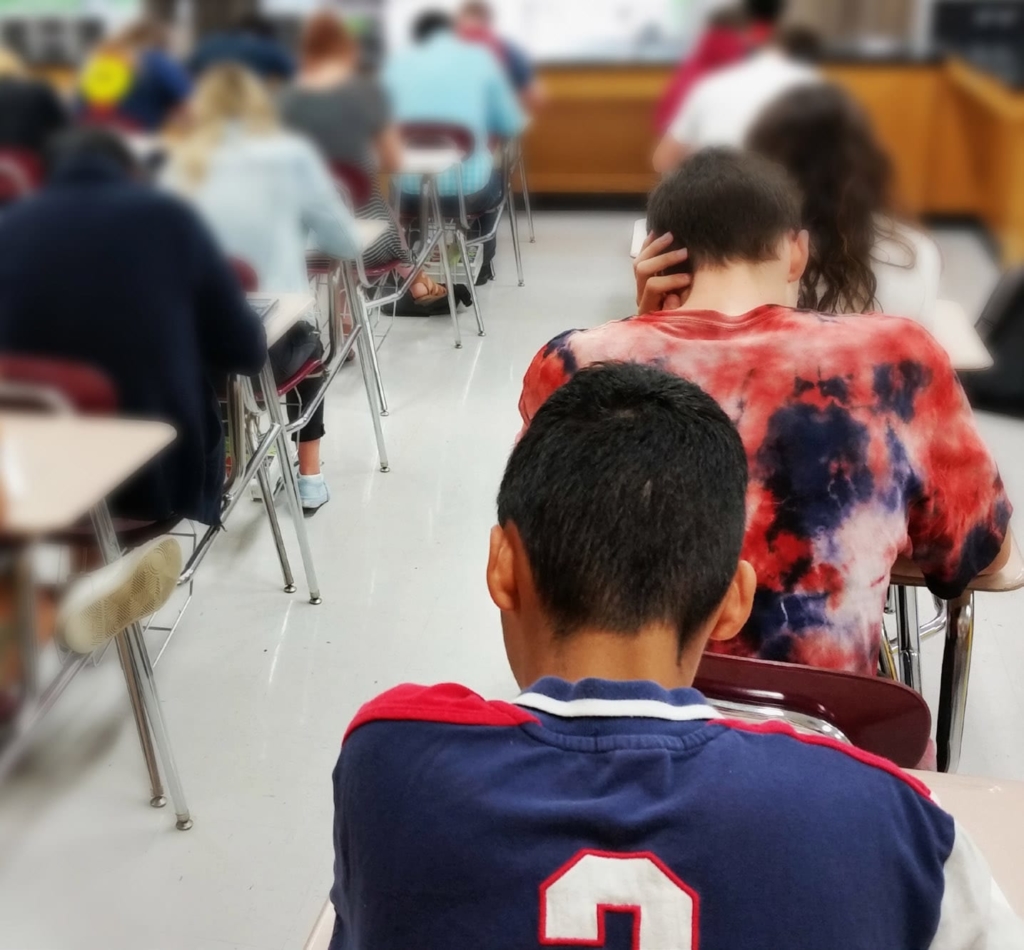
Over the past few years, Washington has experienced significant job growth — so much so that Washington had the fastest growing economy in 2018. During the same time period, the state has become much more racially, ethnically, and linguistically diverse. Yet, the disparities in Washington’s education system threaten this economic outlook as the state is failing to prepare students of color and those from low-income backgrounds for jobs in this new economy. If the state wants to, once again, be a leader in job creation, it must prioritize student success by educating each child to high levels regardless of their skin color, country of origin, language spoken at home or their family’s income.
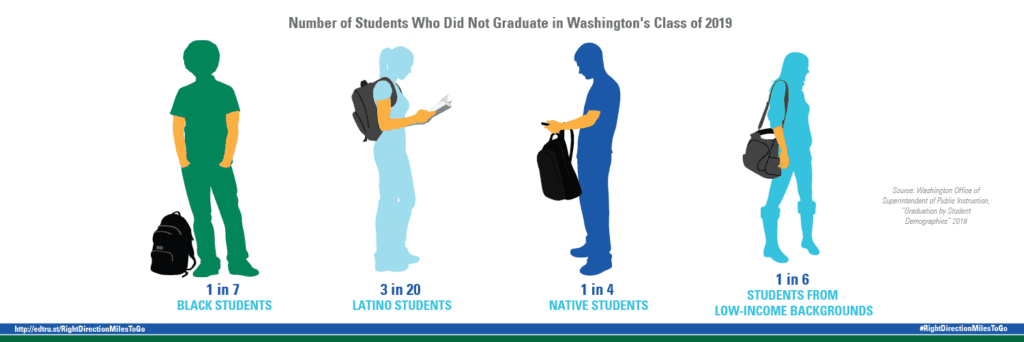
Right Direction. Miles to Go: Closing the Widening Achievement Gaps in Washington State, leverages important measures of educational equity to make the argument for state, district, and school leaders to act to improve the educational experiences and pathways of the state’s most underserved students to maintain and increase job growth.
Right Direction. Miles to Go provides a sobering snapshot of gaps in achievement across the state:
“During this time of a national reckoning on race injustice and with the economy being the top concern for many, Washington’s leaders have an economic, moral, and economic imperative to take bold and targeted action to address the growing disparities in Washington’s education system. “Failure to rectify the educational inequities students are experiencing in Washington state, through the absence of systemic solutions, will significantly hinder the state’s economic recovery for years to come.”
– Lynn Jennings, Ph.D., senior director of National and State Partnerships at The Education Trust
In eighth grade math, Washington’s eighth graders overall placed sixth in the country on eighth-grade math, but the scores for Washington’s Black and Latino eighth graders were about average nationally on the National Assessment of Education Progress (NAEP) — a highly regarded measure of academic achievement. The story is similar for eighth grade reading where Washington fares much better overall but places third from the bottom of all states on eighth grade reading scores for Black students.
And at the elementary school level, fewer than two-thirds of Washington’s fourth graders are reading on grade level. Results for students of color, students from low-income backgrounds, students with disabilities, English learners, and migrant students are substantially lower on NAEP.
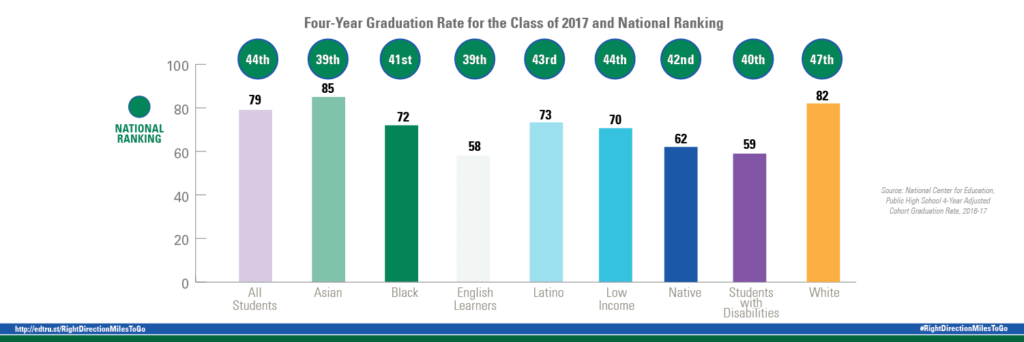
As research shows, gaps in achievement are directly correlated to gaps in opportunity. Washington has taken steps in the right direction in recent years, including 1) ensuring that deserving students are placed into advanced courses; 2) revising discipline policies; 3) expanding dual-language education; and 4) investing $250,000 in a pilot program that supports five school districts to create early warning systems that ensure ninth grade students are on track to graduate. The state needs to continue in this direction to address educational equity concerns, and move more swiftly. Much more needs to be done to make sure every child in Washington has the foundation to thrive in and beyond high school, and be prepared to be part of the workforce needed to regain Washington’s once vibrant economy.
To truly serve all students Washington leaders must prioritize investing in the following four educational opportunities:
Research shows that high-quality early childhood education has lasting effects, including increasing the chances that a child will graduate high school, earn a college degree, and secure fulfilling career. Although the state increased state funding for early childhood education by 11% in 2018 and enrolled 800 more children in state-funded preschool programs, many of Washington’s 3- and 4-year-olds still do not have access to a high-quality early childhood program that will lay the foundation for the rest of their academic careers. For example, Washington enrolls only 13% of Black and Latino 3- and 4-year-olds in the state-funded preschool program.
Research shows that the quality of a teacher is one of the most important factors for student success. Yet students of color in Washington are less likely to be taught by a teacher who has had any experience in the classroom or a teacher who looks like them. Nearly half of Washington’s public-school students are students of color but only 10% of the teachers are teachers of color. If state leaders continue to hire teachers of color at the current rate, it would take the state more than a century to have a teacher workforce that looks like the student body.
When given advanced coursework opportunities, students work harder and engage more in school, leading to higher graduation rates and lower absenteeism and suspensions rates. Yet, too many of Washington’s students from low-income backgrounds and students of color do not have access to advanced coursework opportunities that can set them up for success in college and careers.
Students who experience a positive school climate — where there are mutually beneficial relationships among and between staff and students, where students feel safe and like they belong, where students and families are involved in the decision-making process, and where students receive the supports they need to meet high expectations — tend to have better educational outcomes. But school climate can vary drastically from school to school. Many of the gaps in opportunity experienced in Washington’s schools result in poor school climate, especially for students of color.
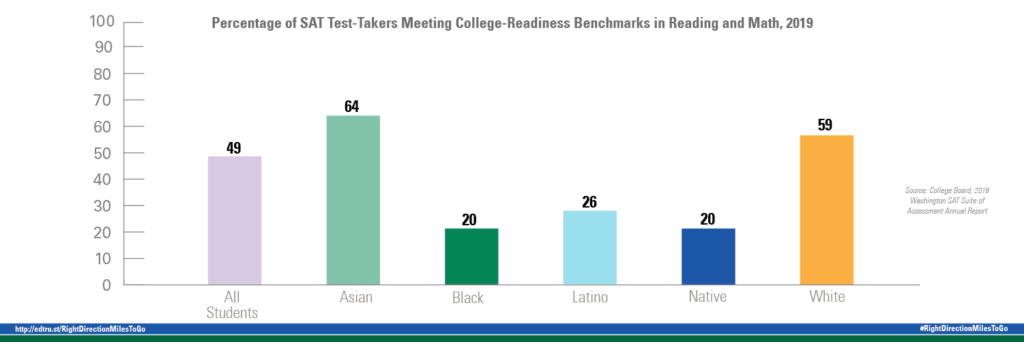
“This report provides vital data and context for many of the challenges we face in Washington state —highlighting the imperative that we focus on students most impacted by injustice in our educational systems if we want to see real change. It is an important tool in making the case for the interconnectedness of school factors, like climate and teacher workforce, and academic outcomes — as well as the importance of interventions throughout Pre-K to 12—as we advocate to change our systems to better serve students that have been historically marginalized.
– Julia Warth, director of policy and research, League of Education Voters
“The coronavirus pandemic compiled with the murder of George Floyd exposed and confronted us with the injustice Black people live with daily. Education is a critical component for establishing and maintaining health, social and economic justice for Black people and all others denied access to the bounties of our country. The Right Direction. Miles to Go report is timely and identifies strategic and transparent actions we can take to close educational gaps and bring forth justice for Black people — and all people.”
– Steve Smith, executive director, Black Education Strategy Roundtable
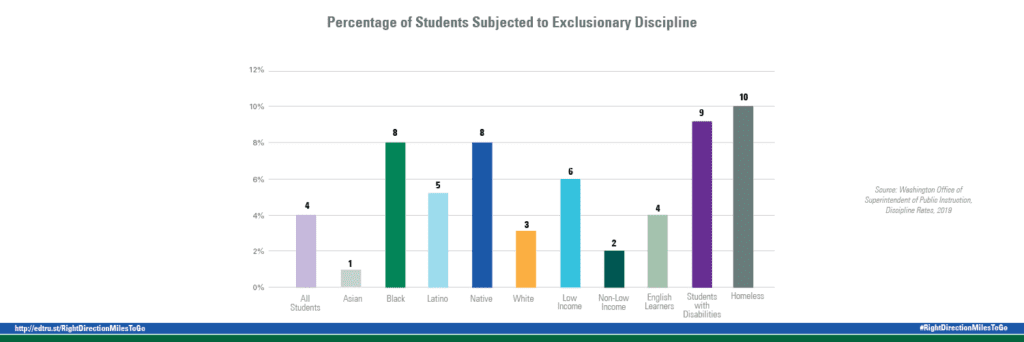
Washington state leaders must increase their efforts and investment in the education of underserved students to secure the state’s economic recovery. With systemic changes, educational leaders at the school, district, and state levels can take tangible steps to eliminate racial and class disparities in education and boost job growth and strengthen the economy.